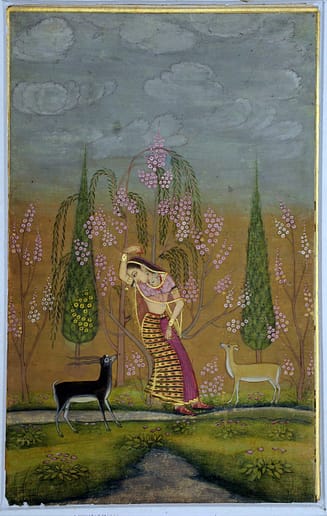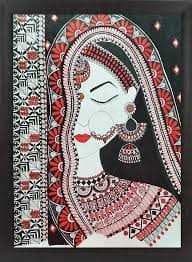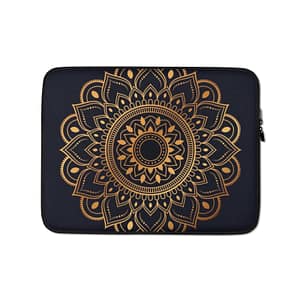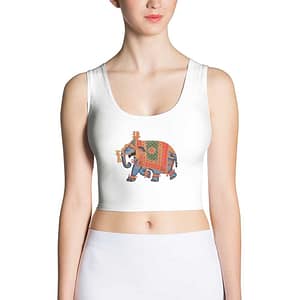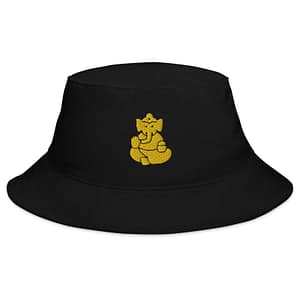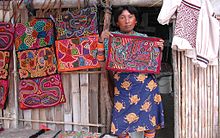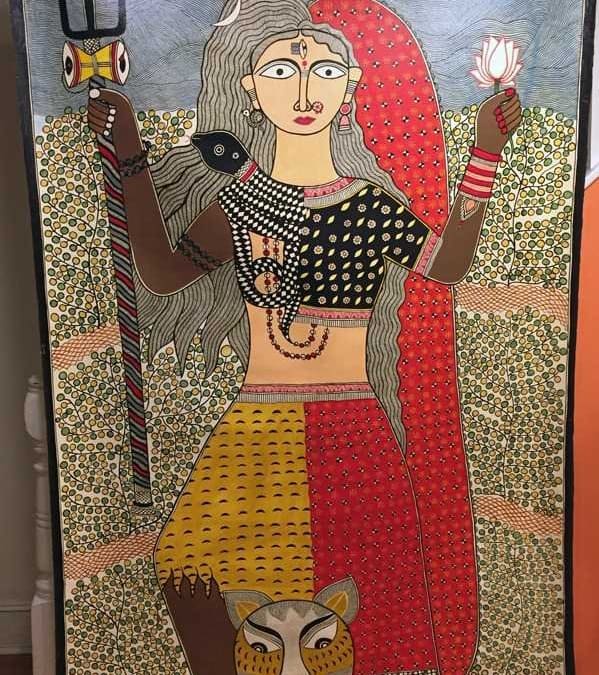
the ART of INDIA
the ART of INDIA
The diversity of the world’s largest national population is astounding.
122 languages, including the planet’s oldest language: Hindi. 12 religions. 1.408 billion people (est. 2021). 29 states.
This pluralism nurtures an insane wealth of art and cultural expression. Arguably, this is the creative soul of Earth.
cgk.ink is exploring this rich history. And we’re here to share our very fundamental, simple understanding of its expressions, its forms and what it says to us now in the 21st century.
Below are some of the genres of Indian art that we gleaned from ArtZolo.com:
Madhubani
Madhubani paintings are the most celebrated style of folk painting from India; it is a form of wall art that arises in the Mithila region of Bihar. This eye-catching art style never fails to amaze one by its beautiful illustrations on the exposed interior walls of the houses in Bihar. Madhubani paintings are a perfect example of artistic expression and evocative portrayal of culture and traditions. The designs make perfectly distinctive geometrical patterns, scenes from mythology, and symbolic images. The perfect blend of bright vibrant colours and unique patterns make Madhubani stand out from other painting styles. Katchni, Tantrik, Bharni, Khobar, and Godna are five different styles of Madhubani paintings.
Warli
Warli is a 2,500-year-old traditional painting style from Maharashtra majorly practiced in Thane and Nashik region. Warli paintings illustrate the nature and social rituals of the tribe. Warli paintings also showcase day-to-day life scenarios of the local people of that particular community just like dancing, farming, hunting, praying, etc. The local women used twigs to draw such beautiful lively designs with rice paste on mud walls to convey the celebration vibes of harvests or weddings.
Kalighat
The Kalighat painting was discovered around the mid-19th century at Kali Temple in Calcutta. These paintings and drawings were done on paper by a community known as “patuas”. A Kalighat painting depicts scenes of everyday life and mythological deities in a captivating manner. Kalighat artists use subtle earthy Indian colours like indigo, ochre, Indian red, grey, blue and white.
Phad
Phad is a traditional Rajasthani scroll painting from India, depicting the stories of local deities, heroic figures from battlefields, adventure stories, and legendary romantic stories on horizontal cloth scrolls with the hues of red, yellow, and bright orange. Phad Painting marvellously portrays multiple stories in a single composition and beautifully maintains the aesthetics of artistic expression.
Miniature/Mughal
Miniature painting is Mughal influenced art form; this style was introduced in India during the 16th century and transformed its identity in the history of Indian art. Miniature paintings are a blend of Islamic, Persian, and Indian elements. These paintings are created using all-natural mineral colours, precious stones, conch shells, gold, and silver. Across India, the miniature style painting has developed its own identity into distinct schools of miniature paintings like Kangra, Rajasthan, Malwa, Pahadi, Mughal, Deccan, etc.
Gond
Gond paintings are a series of arranged dots and dashes developed by the Gondi tribe of central India. The tribes used to recreate some famous epic mythological tales of histories to traditional songs and rituals with rich detailing and bright colours. Traditionally, the colours used for gond paintings were derived from natural resources like cow dung, plant sap, charcoal, coloured soil, mud, flowers, leaves, etc. With growing times, the Gond art has moved beyond being a tribal art style.
Gond Painting is a tribal art form practiced by Gond Tribes of Central India. Gond are Dravidian and the largest Adivasi Community in India. They are predominantly found in Madhya Pradesh but can also be traced in Andhra Pradesh, Maharashtra, Chattisgarh and Odisha. Gond believes that everything is inhabited by a spirit and therefore sacred. Their paintings reflect the close connection between man and the nature. Paintings are created out of carefully drawn lines in such a way that they convey a feeling of movement to the still images. Dots and Dashes are added to make the details and create the feeling of movement. Gond Paintings use vivid and bright colours like White, Yellow, Blue and Red which are derived from natural objects.
Coloured soil, charcoal, plant sap, mud, flowers, leaves, cow dung etc. are used in making the required colours. Recently the Gond Paintings can be seen using poster colours and canvas.
Kerala Murals
Kerala mural paintings are the most unique art form and have deep spiritual roots depicting themes of Hindu mythologies, epics of the bye-gone era, classic tales of Krishna, and mystic forms of Shiva and Shakti. These traditional art styles are made up of bold strokes, and vivid colours. White, ochre-red, bluish-green, yellow-ochre, and pure colours are predominantly used in Kerala mural painting.
Picchwai
Picchwai artwork was made as wall hangings behind the main deity in Krishna temples in Nathdwara which narrates the stories related to Lord Krishna. Picchwais are the most colorful and intricate work concealed with symbolism in the artistic motifs. This classified devotional art practice has passed from one generation to another and a fine example of spirituality in art.
Pattachitra
Showing 1–12 of 45 resultsSorted by latest
-
Jaipur Large Tote Bag
$45.00 -
Jaipur Restful Pillow
Price range: $22.00 through $30.00 -
Ragmala & Krishna Pillow
Price range: $28.00 through $30.00 -
Krishna Crossbody Bag
$42.00 -
Royal Mandala Laptop Sleeve
Price range: $28.00 through $30.00 -
Kali Enshrined Greeting Card
Price range: $5.00 through $7.00 -
Ornate Elephant Hardcover Bound Notebook
$22.00 -
Ornate Elephant Crop Top
$32.00 -
The Anguish of Separation Greeting Card
Price range: $5.00 through $7.00 -
Ganesh Blessing Bucket Hat
$29.00 -
Ganesh Blessing Stemless Wine Glass
$15.00
